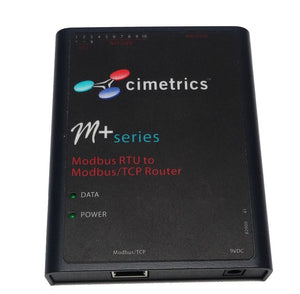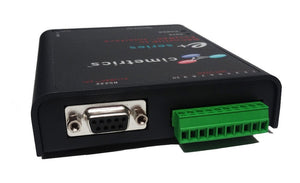Collections: Legacy
Category: B2000 , BACnet , Modbus RTU , Modbus RTU RS-485 , Modbus TCP , quotes , RS-485
Type: BACnet
-
A B2000 router connects Modbus TCP/IP and Modbus RTU RS-485 networks. B2000 is a part of the E+ series of applications solutions. These solutions help the owners to save money and improve building comfort by integrating various protocol devices with the existing Building Automation Systems.
The configuration is done over Ethernet through onboard web pages in the product and can therefore be managed from a remote location. The configuration is simple and the router is up and running in minutes. Modbus RTU data is passed to the Modbus/TCP interface transparently, so there is no need for mapping.
B2000 is housed in the professional ragged metal case and can be mounted standalone, on a wall using wall bracket kit or on a DIN rail. It has one RS485 connector for connecting 4 Modbus RTU meters and one Ethernet 10/100 RJ45 connector.
The Ethernet port uses a standard shielded RJ45 connector with integral LEDs. A power data LED blinks green when the data is being passed.
Flexible connections:
- Conforms to Modbus TCP and Modbus RTU standards
- Supports up to 126 Modbus RTU devices/meters
- Standard RS485 three wire connection
IP network support:
- Built-in web server
- Status page for diagnostics
- Secure login to web configuration and status interfaces
Standard communication:
- 10/100 Mbps Ethernet
- Extremely easy system installation
- 9VDC at 1A input
- Standard power supply included allows use of 60Hz 120 VAC mains
- International power supply available
- Data and Power indicators on case
-

Specifications:
- Adapter Input Voltage: 100 to 240 VAC @ 10W, 50/60 Hz
- Operating temperatures: 7 to 40C
- Dimensions: 102 x 127 x 26 mm (4.0 x 5.0 x 1.0 inches)
- Connections: Ethernet RJ45, modular screw terminal, DC power, standard RS485 three wire connections
- System LED: power LED and data LED
Ethernet:
- IEEE 802.3 10/100 MBPS
- 10BaseT, 100BASETX phsyical. RJ45 connectors
- Half/Full duplex
- 100m (max) CAT5 cable length.
Options:
- wall bracket kit
- DIN rail mounting kit
Modbus Details:
- Confirms to Modbus TCP and Modbus RTU standards
- Modbus RTU baud rates: 300 to 115K - default 9600 8N1
- Supports up to 32 Modbus RTU devices
-
Connecting Ethernet Automation and Field Level Networks
One advantage of Modbus is that the same protocol can operate at both the industrial control level and the field level where field meters and panels are residing. Modbus TCP protocol is a variant of the Modbus family of simple, vendor-neutral communication protocols intended for supervision and control of automation equipment. The most common use of the Modbus TCP protocols are for Ethernet attachment of PLCs, I/O modules, and 'gateways' to other simple field buses or I/O networks. The field devices are usually Modbus RTU meters and field buses. B2000 allows bridging the two protocols together and have Modbus messaging in an 'LAN' or 'WAN' environment using the TCP/IP protocols.
B2000 acts as a Modbus RTU/ASCII Master and can connect to several Modbus slave devices (up to 126). The Modbus TCP side acts as Slave. A cluster of Modbus RTU devices located at different parts of a building can be connected to the same Modbus TCP network but at different locations using separate B2000 routers. Then the user can bring these Modbus RTU devices into the workstation or run tools like widgets to look at the data.
Versalite Web-based controller
A resident web server allows for commissioning, and troubleshooting via a standard web browser. B2000 devices support various protocols such as HTTP, IP, UDP, Modbus TCP. All E+ series devices have a unified web interface and once you configure one of these devices you will have the same experience configuring others.
The Core Settings page allows the setting of IP address, mask, default gateway and Modbus RTU parameters for B2000.
The IP Access page allows the setting of permissions that determine which devices can access the router.
User account names and passwords can be set on the Authorization settings page
The Error log and Statistics page provides information for easy troubleshooting








